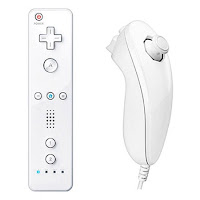Stormtroopers are bad shots. You’ve seen the jokes; it’s one of the most prominent elements of Star Wars humor. Even people who haven’t seen Star Wars make jokes about it. It’s even a trope. You’ve seen explanations in Star Wars novels and comics – the clones are imperfect or the troops are trained too quickly, blah blah blah.
Now, I don’t care about Expanded Universe explanations. The original EU is no more, and the Disney EU is only temporarily canon until it contradicts something in a future film. The movies themselves give better explanations anyway. Two of the biggest scenes of Stormtrooper ineptitude are already explained in-universe. While escaping the Death Star in ANH, and on Cloud City in ESB, the Stormtroopers are on orders to miss. Also, Luke says he can’t see a thing when he tries on a Stormtrooper helmet. And let’s be honest, the nameless rebels aren’t much better shots. This is a series where only named characters are competent. (Except Greedo, apparently, who can’t even hit a guy across a table.)
But for me, I think Obi-Wan was on to something when he called blasters “clumsy and random”. I think that perhaps Star Wars blasters simply aren’t very accurate. It’s not a design flaw, it’s a fundamental problem with how energy weapons work in that universe. Perhaps – and hear me out here – blaster fire tends to drift randomly. Perhaps the moving bolts of energy are naturally attracted to static electricity in the air, and no weapons designer has been able to compensate for this. It doesn’t matter what targeting system you use, energy drift can’t be predicted.
So why do the heroes miss less? Well, you can always blame The Force, but that’s too easy. Maybe there’s something about Stormtrooper armor that attracts blaster fire. Maybe they build up static electricity, so for the same reason blaster fire drifts, it drifts in the direction of Stormtrooper armor. That would be a serious design flaw, but we already knew Stormtrooper armor was badly designed. Not only does blaster fire go right through it, but it won’t even protect you from a rock thrown by a teddy bear. But let’s be fair – they had to mass produce millions of these outfits for Stormtroopers all over the galaxy, how expensive did you expect this armor to be?
Do I get a No-Prize?













